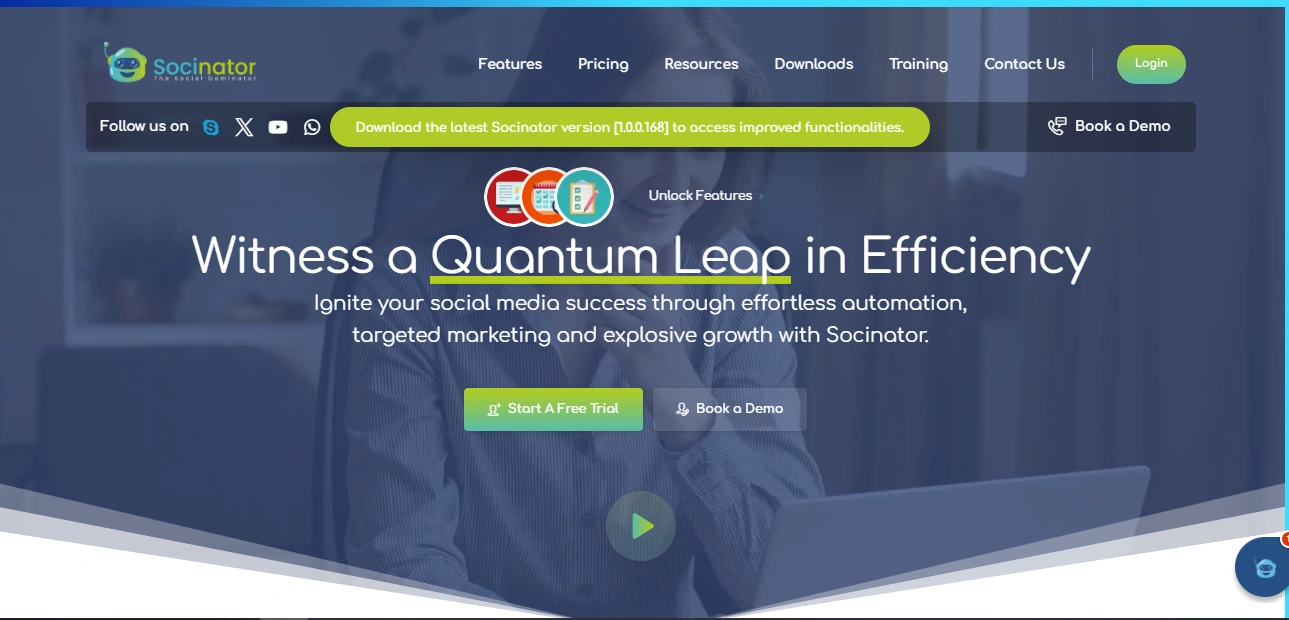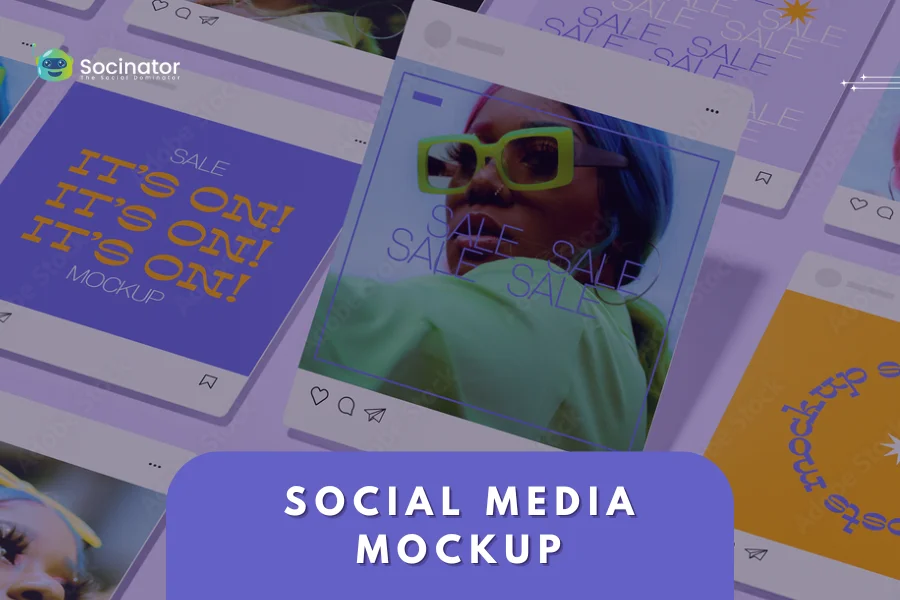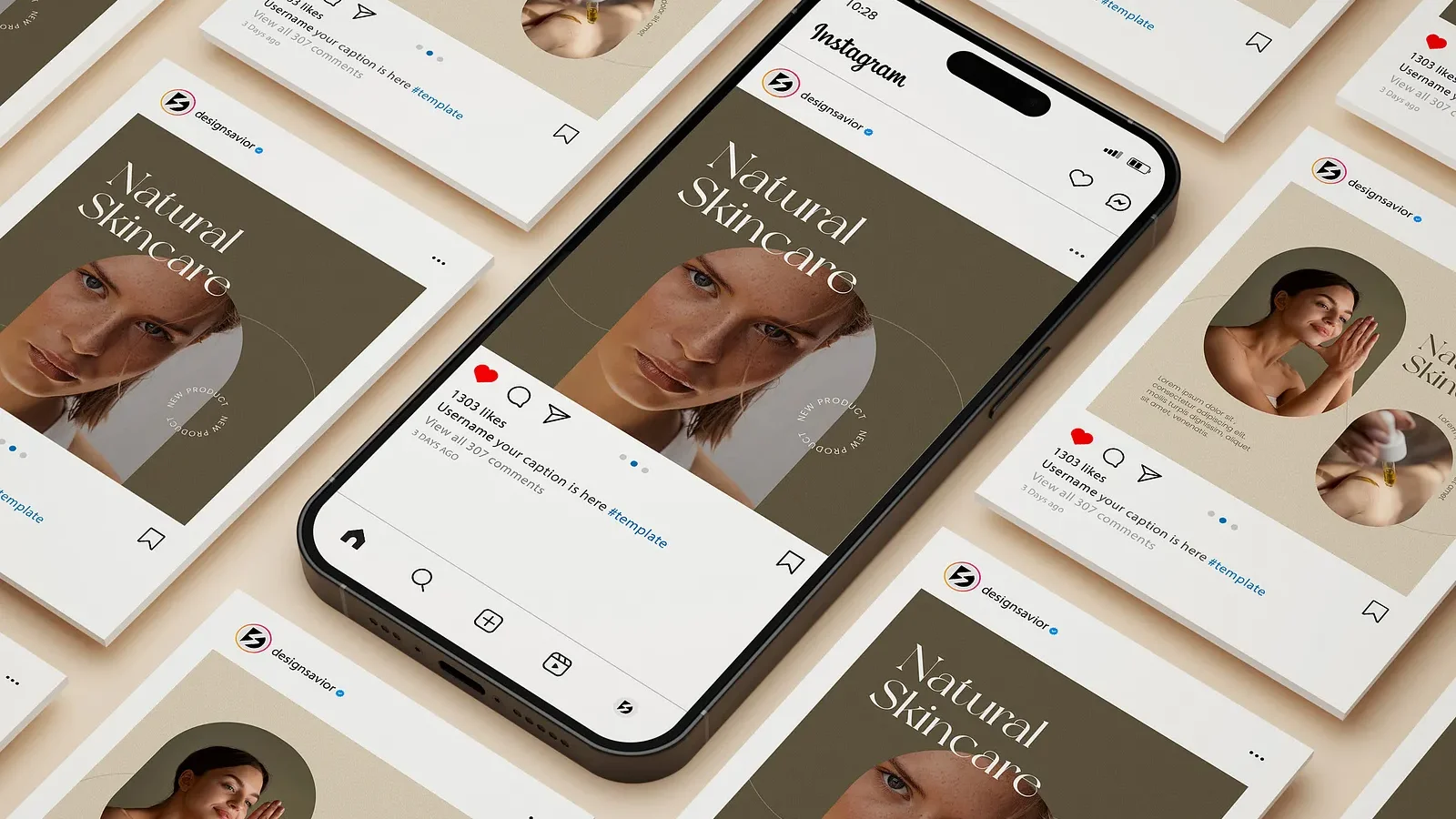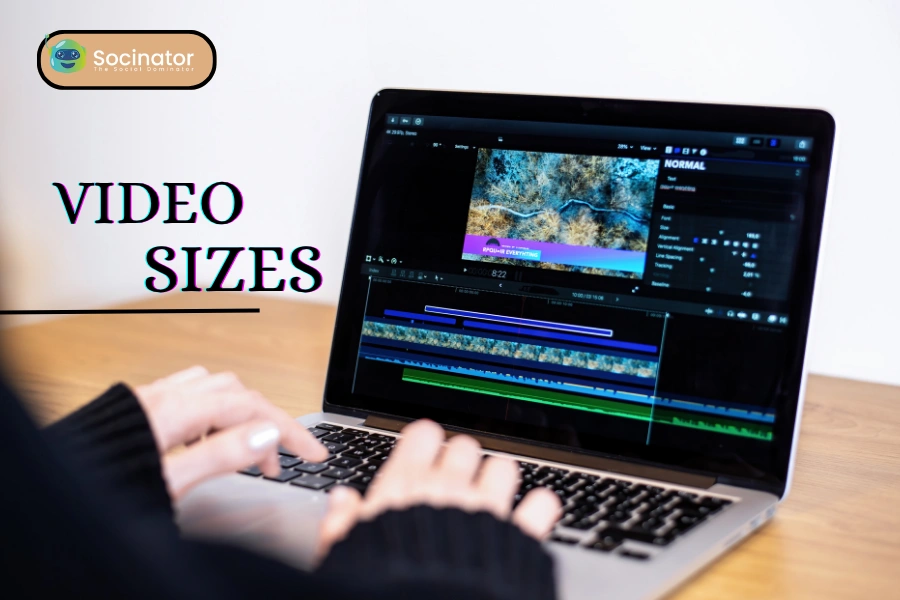You’ve brainstormed the perfect post idea. The design looks sleek, the caption feels clever, and everything seems ready to go. But before you hit “publish,” a thought creeps in — what if it doesn’t land? What if it doesn’t grab attention, or worse, gets ignored completely? That’s precisely why a social media mockup is so beneficial.
Mockups provide a real-world preview of your content before it goes live. You get to see how your post will look on Instagram, Facebook, LinkedIn, or any other platform — and catch anything that feels off. It’s like test-driving your content before showing it to the world.
Whether you’re a marketer, content creator, or social media manager, mockups can help you avoid design mistakes, get faster approvals, and improve performance.
In this blog, we’ll break down how to create a mockup that doesn’t just look good, but will also convert. Stick around and let’s get started!
In a hurry? Listen to the blog instead!
What Is A Social Media Mockup?
Imagine you are about to post a new design, but you are unsure how it will look in someone’s feed. Will the text stand out? Do the colors feel right? Instead of guessing, you can create a social media mockup. It is a visual preview of how your post, ad, or page will appear on platforms, Instagram, Facebook, or LinkedIn.
Think of it as a test run. You get to see the final result before your audience does. It helps you catch precise design flaws, adjust the content spacing, or even switch up the layout, all before publishing anything. For busy marketers, influencers, and social media managers, mockups save time and help avoid costly posting errors.
When sharing ideas with a client or team, a mockup social media profile helps represent how the content matches the brand’s style. It builds trust and gives everyone a clear visual.
A social media mockup is also beneficial for testing different styles, like swapping colors, trying new fonts, or experimenting with image placements. Instead of jumping between drafts and back-and-forth feedback, you can simply show a clean, ready-to-review layout.
Tools make it incredibly easy to build mockups within minutes. If you want to do more—like manage posts, automate publishing, and schedule mockup content, tools like Socinator make the whole process easier.
In short, a social media mockup gives you creative control, improves communication with clients or teams, and helps you deliver polished, professional content every time. It’s one of those small steps that can make a big difference in your content workflow.
Why Conversion-Focused Mockups Matter In 2025?
In 2025, it’s not enough for a post to look good—it must perform. That’s why a social media mockup isn’t just a design preview. It’s a key part of the content creation process that helps you improve results, speed up approvals, and reduce risks before anything goes live.
Here’s why focusing on conversion-ready mockups matters more than ever:
1. It’s About More Than Looks
A mockup isn’t just to show off pretty visuals. It’s your chance to test how a post feels on the feed before you publish it.
- It shows exactly how a post will appear across devices and platforms.
- It helps avoid visual errors, text cuts, image misalignment, or poor spacing.
- You can check tone, formatting, and layout in a real-world preview.
A well-crafted social media mockup lets your team review and refine posts based on actual context, not guesswork.
2. Faster Team Collaboration and Stakeholder Approvals
Getting everyone aligned on a campaign can be eternal. A mockup makes it easier.
- Clients and decision-makers can see precisely what they’re approving.
- Creative teams avoid back-and-forth emails and miscommunication.
- Revisions are quicker because the visual context is already comprehensible.
If you need to show a complete mockup social media profile with a series of posts, this becomes even more important during long campaigns or launches.
3. Predict Engagement Before You Hit “Post”
Guessing what works is risky. Mockups let you test things early.
- You can preview different headlines, captions, or call-to-actions.
- You’ll get internal feedback before publishing to your audience.
- You spot weak points—like cluttered layouts or hard-to-read text—before it’s too late.
This predictive approach helps you make smarter decisions, especially with paid ads. And yes, a social media mockup makes it possible.
4. Run A/B Tests Without Wasting Ad Spend
Before running full campaigns, mockups help test your social media content ideas safely.
- Create multiple versions of your post with precise changes (like image style, tone, or CTA).
- Show both options to your team or client.
- Decide which one has more impact before spending any money.
Using a social media post mockup is a safe way to identify what resonates with your audience without wasting time or budget on poor-performing content.
5. Plan Long-Term Campaigns Visually
Social media marketing isn’t just one post at a time—it’s a long game.
- Mockups help you visualize how your posts will look over weeks or months.
- It ensures your brand stays consistent in tone, design, and layout.
- It gives clients confidence when seeing how an entire campaign fits together.
It is beneficial for brands planning seasonal content, product launches, or influencer collaborations. And again, it all starts with a social media mockup.
6. Real Results: Mockups Improve Performance
Mockups don’t just help with planning—they drive better outcomes.
For example:
A fictional skincare brand tested two ad mockups before launch. One had a minimal design with neutral tones; the other used bold colors and direct messaging. After testing both internally, they chose the bolder design, and it boosted their CTR by 40%.
No extra ad spend. Just careful planning with mockups.
That’s the power of a good social media mockup: you improve content before the audience even sees it.
7. Smart Tools Save Time and Keep You Organized
Design is one part of the process—execution is another. Tools like Socinator make the complete workflow easier.
- Design mockups with tools like Mockey AI
- Then, use Socinator to schedule, automate, and publish your approved content
- Keep your posting consistent across platforms like Instagram, LinkedIn, Facebook, and more
Instead of switching between tools and tabs, you stay focused on results and save hours every week.
How To Make Social Media Mockups That Convert?
A good-looking post is nice, but a high-converting one? That’s the real win. Whether you’re running a campaign, promoting a product, or building your brand, your post should drive action. That’s why creating a social media mockup the right way matters.
Here’s a step-by-step process to make mockups that not only look great but also perform well.
1. Start With A Clear Goal
Before you design anything, know what you want from the post.
- Do you want more clicks?
- Are you trying to boost engagement?
- Is the goal traffic, sign-ups, or sales?
Once you have set your goal, you can structure the design and messaging around it. Every element—from image to CTA—should support this outcome.
2. Pick The Right Platform
Designs look different on each platform. What works on Instagram may not suit LinkedIn, that’s why you should have multiple social media post design ideas. Here is what you may look upto-
- Instagram = visual-first, bold graphics, short text
- Facebook = versatile, mixed media, strong CTAs
- LinkedIn = professional tone, clean layout, clear value
Your social media mockup should reflect the format and vibe of the platform you’re posting on.
3. Choose A Template That Matches Your Brand
A mismatched template can confuse your audience. Use a layout that fits your visual identity.
- Stick to your brand colors and fonts
- Keep the tone consistent with your existing posts
- Make sure the design feels familiar to your followers
Using a tool like a social media mockup generator, such as Mockey or Planable, can help you find on-brand templates quickly.
4. Use Real Content (Not Dummy Text)
Don’t rely on placeholder copy or generic images.
- Use actual product photos or branded visuals
- Write real headlines, captions, and call-to-actions
- Keep the messaging aligned with your campaign goal
Actual content gives your mockup context and helps your team visualize the final post accurately.
5. Design for Mobile First
Most users scroll on mobile. So test how your design looks on smaller screens.
- Check spacing, font size, and image clarity
- Avoid text-heavy designs that require zooming
- Make sure the CTA is visible without scrolling
A mobile-friendly social media mockup ensures your post catches attention in real time.
6. Collaborate and Review With Your Team
Once the mockup is ready, get feedback.
- Share it with your internal team or client
- Ask: Does it deliver the goal? Is it clear and eye-catching?
- Make edits before moving forward.
It saves time and avoids last-minute changes after publishing.
7. Test, Tweak, & Export
Use tools to preview the mockup in an actual feed layout. If possible, A/B test diverse versions.
- Adjust based on internal or client feedback
- Finalize the design
- Export the mockup and implement it into your content schedule
With the accurate process, a social media mockup becomes more than just a preview—it becomes a strategy tool to boost performance and build better content.
Key Elements Of A High-Converting Social Media Mockup
Creating a mockup is easy. But making one that drives results? That’s where the real skill comes in. A social media mockup is more than just a visual. It’s a preview of how your audience will interact with your content—and how likely they are to take action.
Let’s break down the essential elements that turn mockups into high-converting content.
1. Clear & Actionable CTA
Every great post tells people what to do next.
- Use direct CTAs like “Shop Now,” “Learn More,” or “DM Us.”
- Place the CTA where one can consume it easily. Top or bottom of the image or caption.
- Make it simple, focused, and benefit-driven.
Your social media mockup should always reflect a clear purpose. Without a strong CTA, even a beautiful post may miss its goal.
2. Scroll-Stopping Visuals
You only get a second to grab attention. Make it count.
- Use bold colors or contrast to highlight key elements.
- Feature product images, faces, or emotions to connect quickly.
- Avoid clutter—leave room to breathe.
Test how your mockup looks on mobile. If it doesn’t stop the scroll in 2 seconds, tweak it.
3. Consistent Branding
A mockup should feel like part of your brand’s world.
- Use your brand colors, fonts, and tone of voice.
- Include your logo subtly if needed.
- Match the mockup’s vibe to your ongoing content theme.
When a social media mockup looks consistent with your brand, it builds trust and recognition.
4. Strong Visual Hierarchy
Guide the viewer’s eyes to what matters most.
- Place the headline or product name at the top.
- Highlight offers, prices, or deadlines using color or size.
- Make sure nothing competes with the CTA.
Hierarchy helps people process your message quickly, critical for platforms like Instagram or Facebook.
5. Real Content, Not Placeholders
Mockups should look like the final post, not a draft.
- Use the actual product photo or campaign image.
- Write original captions or ad copy.
- Skip the Lorem Ipsum—write how you’d speak to your audience.
It gives clients, teammates, or yourself an actual preview of what’s going live.
6. Social Media Automation
Using the right tools helps speed up the process without losing quality.
It is where platforms like Socinator shine. It works as a social media management software, letting you not only plan but also automate and publish mockup-tested content. You can schedule, track performance, and tweak posts based on data—all from one dashboard.
When you combine a solid social media mockup with automation tools, your workflow becomes faster, smarter, and more focused on results.
Read More
20 Unique Social Media Content Ideas When You’re Struck
13 Outstanding Ideas For Social Media Post Design Ideas
10 Ultimate Social Media Plan Template To Boost Your Strategy
How Socinator Helps In Social Media Mockup?
 Creating a social media mockup is just the first step. The real magic happens when you can plan, preview, and publish—all in one smooth flow. That’s where Socinator makes a big difference.
Creating a social media mockup is just the first step. The real magic happens when you can plan, preview, and publish—all in one smooth flow. That’s where Socinator makes a big difference.
Many creators and marketers spend too much time switching between mockup tools, planners, and schedulers. It’s messy and inefficient. But Socinator helps bring it all under one roof.
1. Post Scheduling Made Simple
Mockups are great, but what happens next? You still need to publish them at the right time. Socinator lets you schedule your content ahead of time so your posts go live when your audience is most active. No need to worry about last-minute uploads.
It is beneficial if your social media mockup is part of a great campaign with multiple touchpoints.
2. All-in-One Social Media Management
Socinator isn’t just a scheduler—it’s a complete social media management software. From creating content to automating posts and tracking results, it handles everything in one place. You can manage multiple accounts, set up smart automation, and even monitor performance with detailed reports.
So once your social media mockup is ready, you can plug it into your content plan and let Socinator do the heavy lifting.
3. Smart Automation Saves Time
One of the biggest perks of Socinator is automation. It can repost, reshare, and even engage with your audience based on set rules. That means once you’ve finalized a social media mockup, you don’t need to keep checking in. The system keeps your content flowing and your pages active.
Mockups help you see the future of your content. Socinator, a social media marketing software, helps you live it. From preview to post, it’s the perfect support tool for anyone who wants to make their social media mockup work harder—and convert better.
The Bottom Line
Let’s be real—posting blindly on social media is a risky move. A social media mockup helps you see your content in action before your audience does. It’s your chance to fine-tune the layout, message, and design so nothing feels off when it finally goes live.
Mockups don’t just save time—they improve teamwork, sharpen your brand identity, and lead to better results.
So before you hit publish, take a step back and mock it, check if it is according to social media plan template, test it, and refine it.
And if you’re looking for a smarter way to handle the entire process, tools like Socinator can help you manage, schedule, and automate with ease, from mockup to final post.
Frequently Asked Questions
1. Can I use social media mockups for client presentations?
Absolutely. Social media mockups are great for client-facing presentations. They provide a clear visual of how the final content will appear, helping clients visualize the idea and give faster approvals.
2. How do mockups help in brand consistency across platforms?
Mockups allow you to preview how your content looks across multiple platforms, helping ensure your brand colors, fonts, and tone stay consistent—no matter where the content appears.
3. Are there platform-specific mockup templates?
Yes. Many tools offer platform-specific templates tailored for Instagram Stories, LinkedIn posts, Facebook carousels, YouTube thumbnails, and more. These templates follow each platform’s design specs, making your preview more accurate.
4. Do I need design skills to create a social media mockup?
Not necessarily. Many beginner-friendly tools like Canva, Figma, or Mockey provide drag-and-drop functionality. You can use templates and customize without needing advanced design knowledge.
5. How often should I use mockups in my content creation workflow?
Use mockups for every campaign or important post, especially when visual impact matters. It’s particularly useful for branded content, ads, product launches, influencer partnerships, and seasonal promotions.







